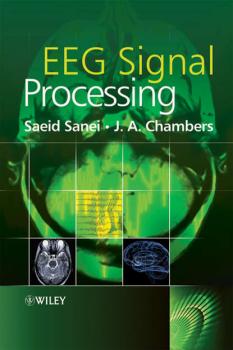ТОП просматриваемых книг сайта:















Saeid Sanei
Список книг автора Saeid SaneiАннотация
Electroencephalograms (EEGs) are becoming increasingly important measurements of brain activity and they have great potential for the diagnosis and treatment of mental and brain diseases and abnormalities. With appropriate interpretation methods they are emerging as a key methodology to satisfy the increasing global demand for more affordable and effective clinical and healthcare services. Developing and understanding advanced signal processing techniques for the analysis of EEG signals is crucial in the area of biomedical research. This book focuses on these techniques, providing expansive coverage of algorithms and tools from the field of digital signal processing. It discusses their applications to medical data, using graphs and topographic images to show simulation results that assess the efficacy of the methods. Additionally, expect to find: explanations of the significance of EEG signal analysis and processing (with examples) and a useful theoretical and mathematical background for the analysis and processing of EEG signals; an exploration of normal and abnormal EEGs, neurological symptoms and diagnostic information, and representations of the EEGs; reviews of theoretical approaches in EEG modelling, such as restoration, enhancement, segmentation, and the removal of different internal and external artefacts from the EEG and ERP (event-related potential) signals; coverage of major abnormalities such as seizure, and mental illnesses such as dementia, schizophrenia, and Alzheimer’s disease, together with their mathematical interpretations from the EEG and ERP signals and sleep phenomenon; descriptions of nonlinear and adaptive digital signal processing techniques for abnormality detection, source localization and brain-computer interfacing using multi-channel EEG data with emphasis on non-invasive techniques, together with future topics for research in the area of EEG signal processing. The information within EEG Signal Processing has the potential to enhance the clinically-related information within EEG signals, thereby aiding physicians and ultimately providing more cost effective, efficient diagnostic tools. It will be beneficial to psychiatrists, neurophysiologists, engineers, and students or researchers in neurosciences. Undergraduate and postgraduate biomedical engineering students and postgraduate epileptology students will also find it a helpful reference.
Аннотация
In this book, the field of adaptive learning and processing is extended to arguably one of its most important contexts which is the understanding and analysis of brain signals. No attempt is made to comment on physiological aspects of brain activity; instead, signal processing methods are developed and used to assist clinical findings. Recent developments in detection, estimation and separation of diagnostic cues from different modality neuroimaging systems are discussed. These include constrained nonlinear signal processing techniques which incorporate sparsity, nonstationarity, multimodal data, and multiway techniques. Key features: Covers advanced and adaptive signal processing techniques for the processing of electroencephalography (EEG) and magneto-encephalography (MEG) signals, and their correlation to the corresponding functional magnetic resonance imaging (fMRI) Provides advanced tools for the detection, monitoring, separation, localising and understanding of functional, anatomical, and physiological abnormalities of the brain Puts a major emphasis on brain dynamics and how this can be evaluated for the assessment of brain activity in various states such as for brain-computer interfacing emotions and mental fatigue analysis Focuses on multimodal and multiway adaptive processing of brain signals, the new direction of brain signal research


